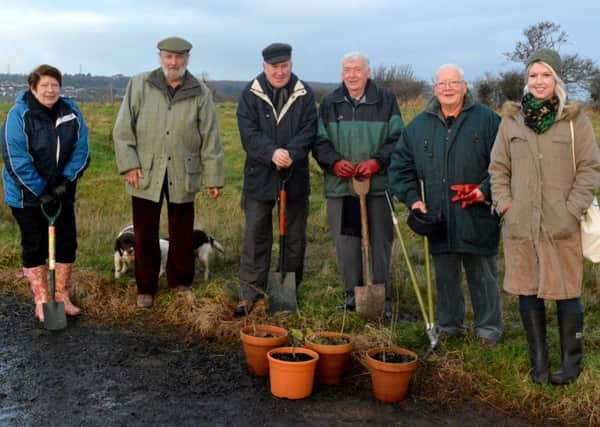Somme’s little acorns to grow as Jubilee oaks


It was held at Diamond Jubilee Wood where 10 more trees were added to the 65,000-plus already growing at the location.
Although small in number, these particular oak trees are of huge historical importance.
Advertisement
Hide AdAdvertisement
Hide AdThey were donated by Roy Lappin who grew them into saps in his own garden, having brought back acorns from the Somme, Verdun, and Marne regions of France.
Alison Diver, Natural Communities outreach officer with Carrickfergus Borough Council, explained: “ Mister Lappin has a strong family connection to the war and - knowledgeable of Whitehead’s wartime history - wished to donate these trees for planting in Jubilee Wood.
“Indeed, the land where Diamond Jubilee Wood is sited was once known as ‘The Whitehead Aerodrome’ as a consequence of the many different types of aircraft which used the area for landing.”
Mr Lappin, Councillor Isobel Day and members of Brighter Whitehead Community Group joined Alison Diver at the tree-planting.
Advertisement
Hide AdAdvertisement
Hide Ad“From 1915 to 1917, Whitehead was home to the first military aviation facility in Ireland – one which played an important role in the First World War,” continued Alison.
“Royal Naval Air Service airships based at Bentra patrolled the waters between Ireland and Scotland, combating the German U-Boat menace.
“The airships operated from an airship station at Bentra, which had an airship shed comprising a steel frame covered by canvas and measuring 150 feet long by 45 feet wide and 50 feet high.
“Wooden huts provided accommodation for the pilots and engineers. At least four airships operated from the station at Bentra.
Advertisement
Hide AdAdvertisement
Hide Ad“The primary task for the airships stationed at the Bentra Aerodrome was to protect the Princess Maud cross-channel ferry and guard incoming convoys in the North Channel from German submarines.
“When the prevailing wind permitted, the crew would scout from the air, looking for submarines on the surface or the wake of a periscope.
“Success depended on close cooperation between the naval airmen and the warships operating from Larne harbour.”
The heritage link to the wood was further underlined by the another tree planting on the day.
Advertisement
Hide AdAdvertisement
Hide AdBill Pollock, a member of the award-winning Brighter Whitehead, brought along a royal oak tree.
Alison added: “The royal oak is the English oak tree near Boscobel House in Shropshire in which King Charles II of England hid to escape the Roundheads following the Battle of Worcester in 1651.
“The oak tree planted in Diamond Jubilee Wood is from a royal estate and will eventually grow up to 20m-40m tall.”
Meanwhile, council has created an online survey inviting feedback from those who have Bashfordsland Wood and Diamond Jubilee Wood.